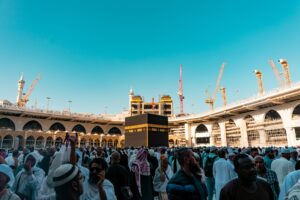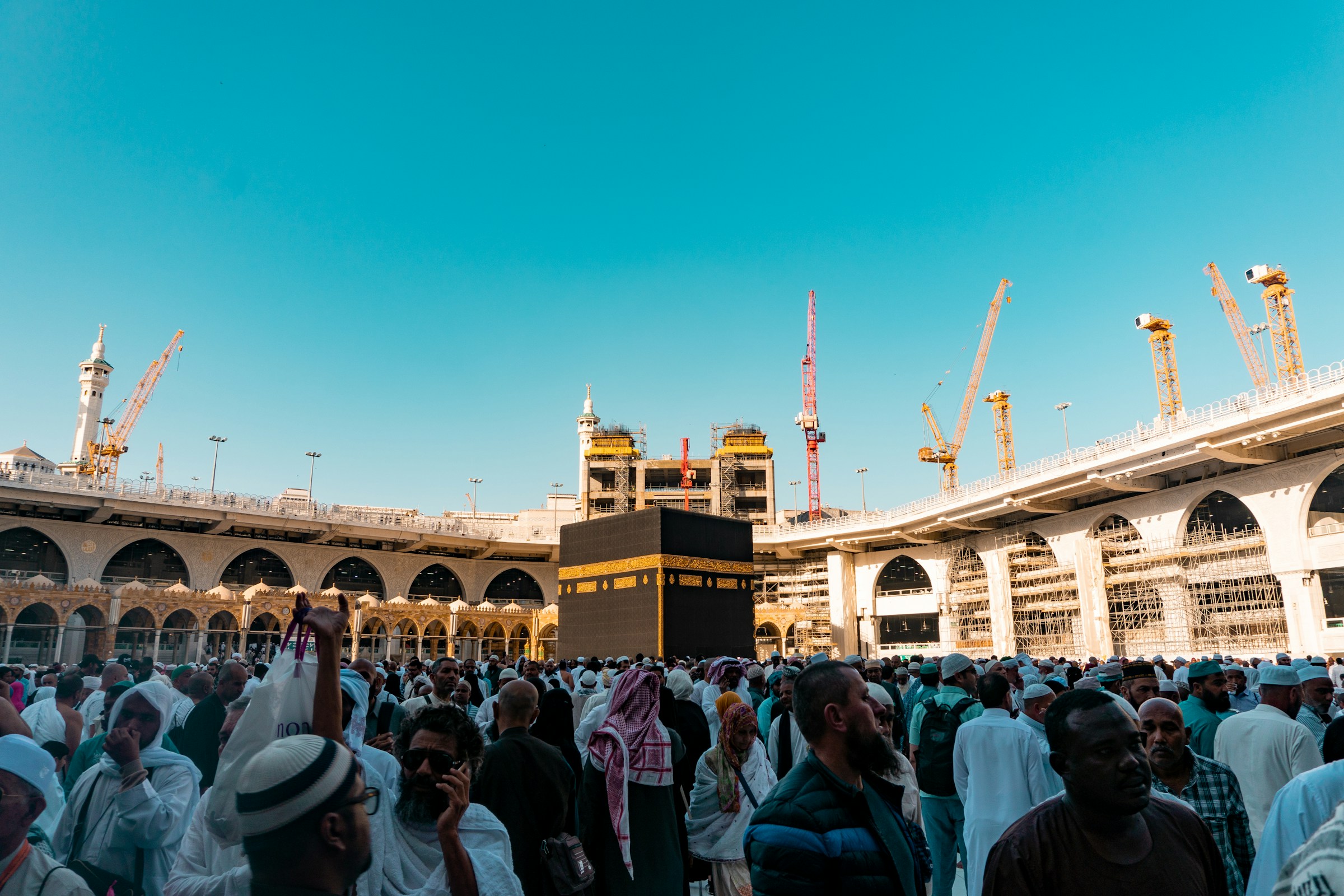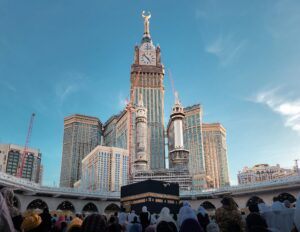

The Kabah holds immense spiritual value for Muslims around the world. More than just a building, it stands as a powerful symbol of unity, devotion, and obedience to Allah Almighty. Located in the sacred city of Makkah, the Kabah is central to Islamic worship, serving as the Qibla—the direction Muslims face when offering their daily prayers. In this article, we’ll explore the deep spiritual and historical significance of the Kabah, and how it unites the Muslim Ummah in a shared act of devotion. Whether you’re a seasoned pilgrim or someone looking to learn more about this sacred structure, this guide will help deepen your understanding.
The Kabah is a cube-shaped structure located at the heart of Masjid al-Haram, the Grand Mosque in Makkah, Saudi Arabia. Built from granite and draped in the Kiswah—a black cloth adorned with golden verses from the Holy Quran—the Kabah is considered the first house of monotheistic worship. According to Islamic belief, it was originally constructed by Prophet Ibrahim (Abraham) and his son Prophet Ismail (Ishmael). Although it has undergone reconstruction over time due to natural and human events, its sanctity and centrality in Islam remain unchanged.
Wherever Muslims are in the world—whether in Asia, Europe, Africa, or the Americas—they all turn toward the Kabah during Salah (prayer). This shared direction, known as the Qibla, is not an act of worship toward the building itself, but a unified submission to Allah. It is a powerful visual and spiritual reminder of the equality and oneness of all Muslims, regardless of geographic boundaries.
Historically, the Kabah was once surrounded by idols and served as a place of tribal worship before the advent of Islam. When Prophet Muhammad (PBUH) entered Makkah and cleansed the Kabah of its idols, he restored it to its original purpose as a house dedicated solely to the worship of Allah. This marked a pivotal moment in Islamic history and reinforced the Kabah’s role as the spiritual heart of the Muslim world.
The Kabah is not only the direction of prayer but also the central site of the Hajj and Umrah pilgrimages. Every able-bodied Muslim with the financial means is obligated to perform Hajj at least once in their life. During these pilgrimages, Muslims perform Tawaf, which involves circling the Kabah seven times as a sign of devotion and unity.
One of the most awe-inspiring aspects of the Qibla is its ability to spiritually unify Muslims worldwide. Whether in a small village mosque or a large urban Islamic center, believers face the same direction in every prayer. This common orientation highlights the brotherhood of Islam and serves as a symbol of equality before Allah.
Spiritually, facing the Kabah brings focus, humility, and discipline in worship. It reinforces the feeling of belonging to one Ummah, where millions of Muslims are spiritually aligned in their worship at any given moment.
Thanks to modern technology, determining the direction of the Kabah is now easier than ever. Various Qibla-finding apps, compasses, and GPS-based tools make it simple to know where to face. In most mosques and prayer areas, the Qibla is already clearly marked to guide worshippers.
Seeing the Kabah with your own eyes is a spiritually overwhelming experience. Many Muslims plan their Umrah pilgrimage, a journey that can be performed any time of the year, to witness the Kabah up close and perform sacred rituals like Tawaf.
As you prepare for Umrah 2025, allow this journey to be more than just a trip—it’s a chance to reconnect with your faith and reflect deeply on your relationship with Allah. Being near the Kabah, touching its walls, or simply looking upon it creates an indescribable sense of awe and submission.
To make this spiritual journey comfortable and memorable, MTC Travel offers specially designed Umrah packages that cater to your needs. From personalized travel plans to group packages, MTC Travel ensures a smooth, convenient, and spiritually enriching experience.
The Kabah’s significance goes far beyond being a physical structure. It represents the unity, piety, and devotion of the Muslim Ummah. Facing the Kabah reminds believers of their purpose—to worship the One Creator. It’s a place that brings Muslims together across cultures and languages and serves as a constant reminder of submission to Allah.
Whether you’re performing daily prayers at home or preparing to embark on the sacred journey of Umrah or Hajj, the Kabah is a guiding force in your spiritual life.
Ready to witness its power and beauty up close? MTC Travel is here to help you plan your Umrah 2025 with ease and peace of mind. Let us take care of the details so you can focus on what truly matters—your connection with Allah.
Contact MTC Travel today and take the first step towards a life-changing spiritual experience.
The Kabah’s significance goes far beyond being a physical structure. It represents the unity, piety, and devotion of the Muslim Ummah. Facing the Kabah reminds believers of their purpose—to worship the One Creator. It’s a place that brings Muslims together across cultures and languages and serves as a constant reminder of submission to Allah.


WhatsApp us